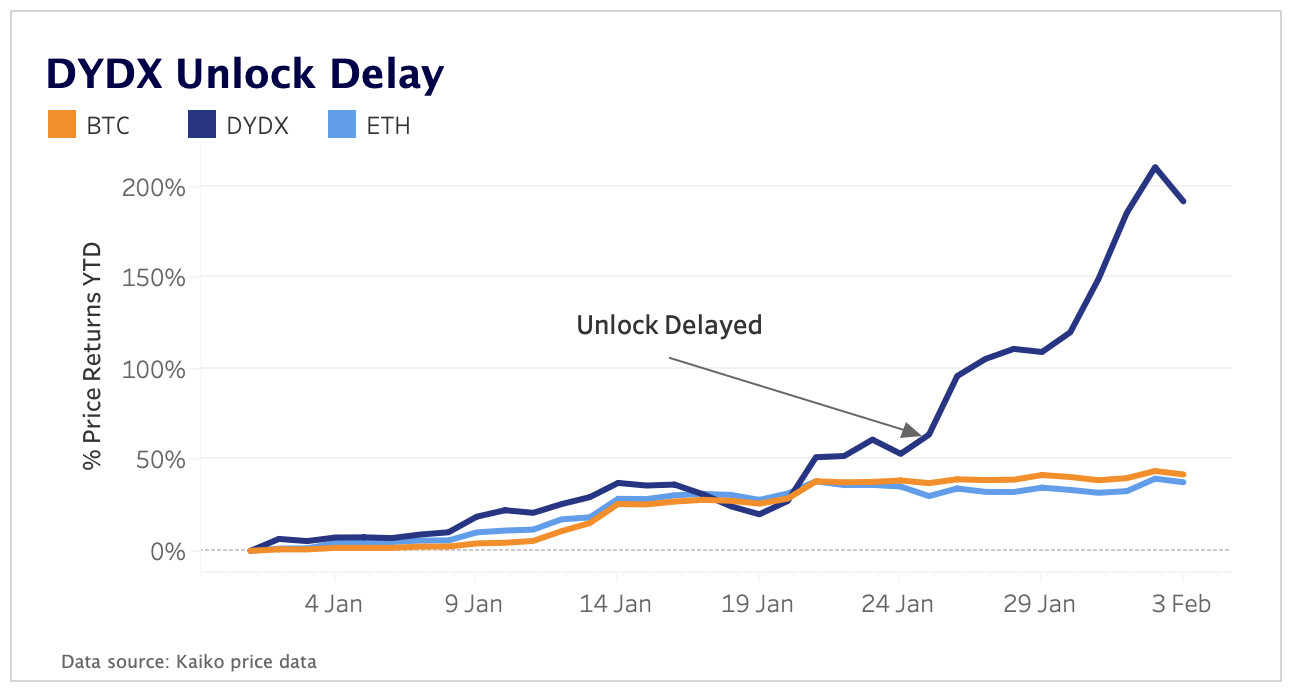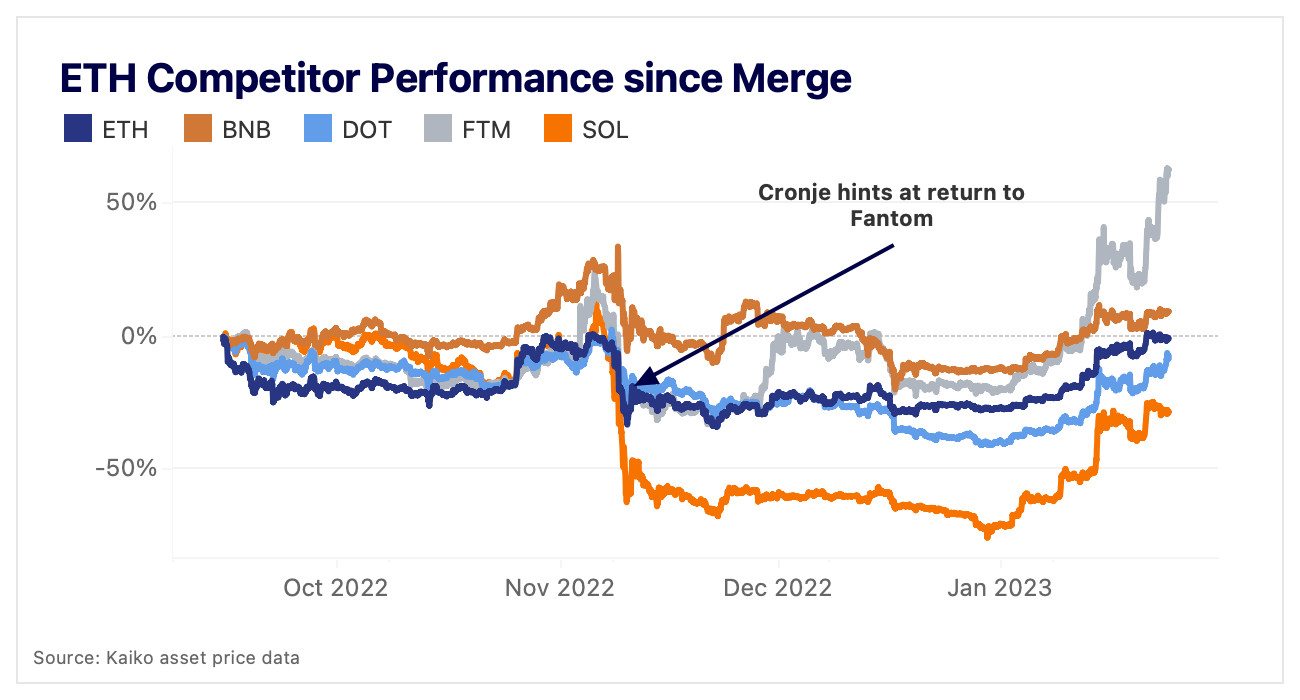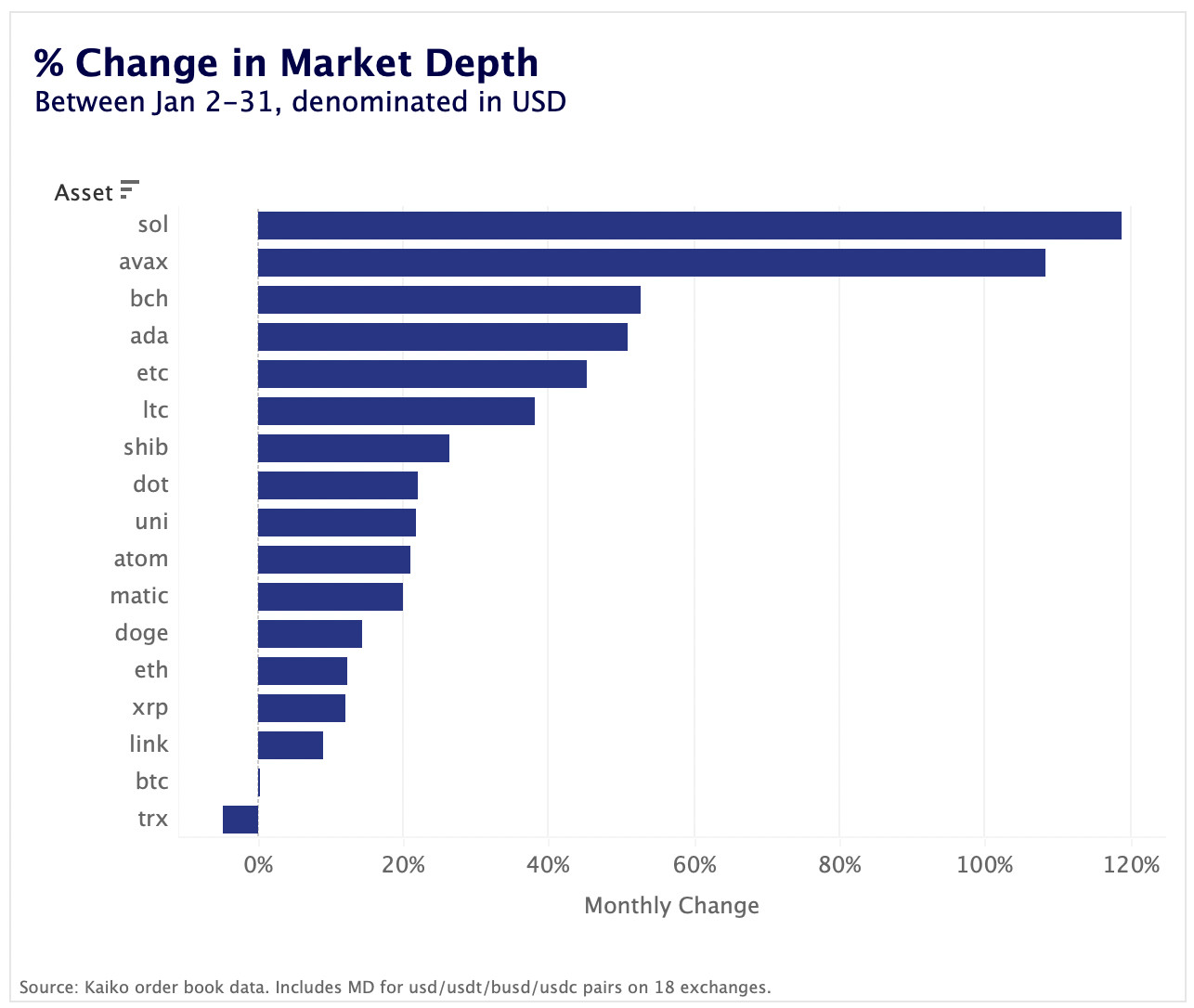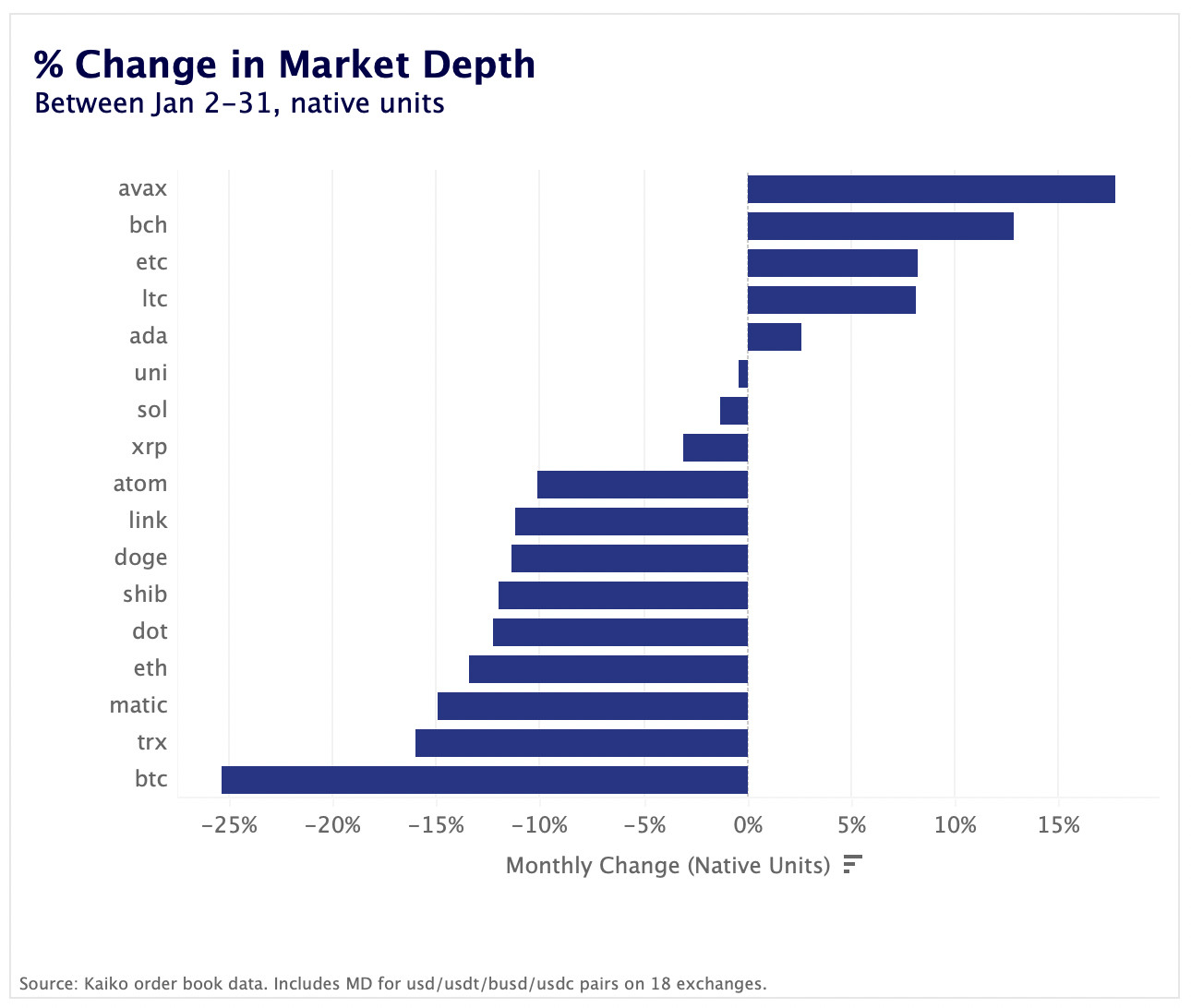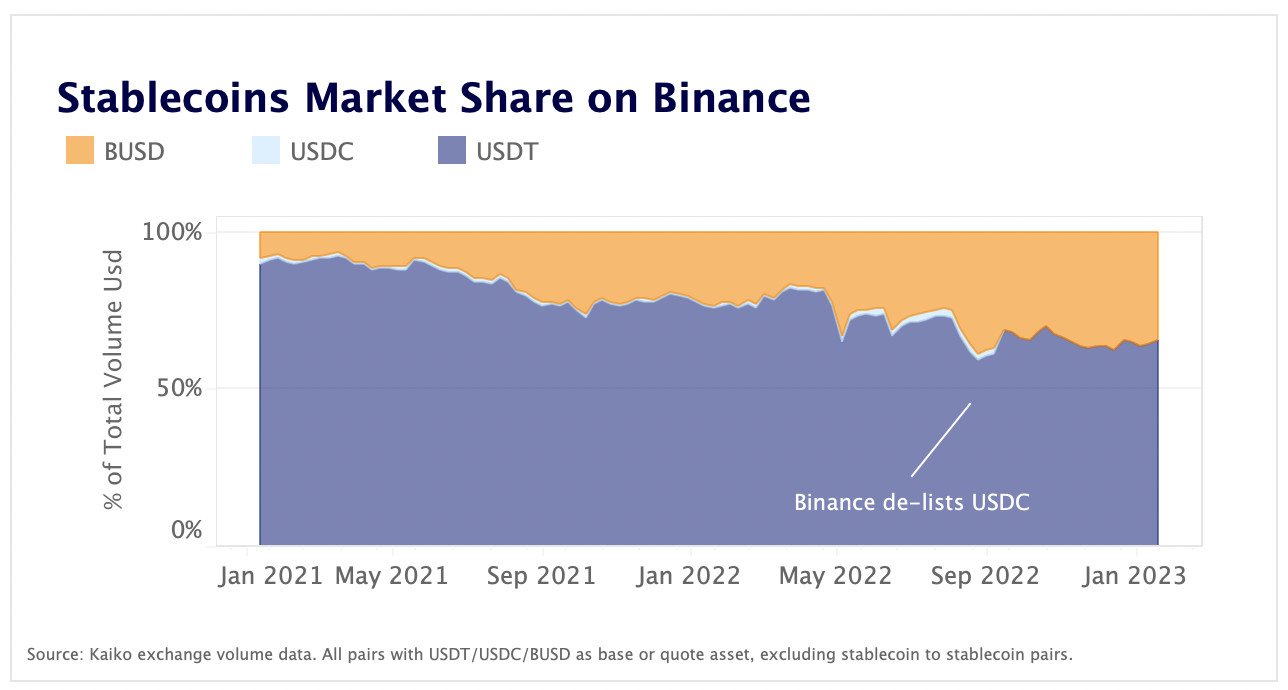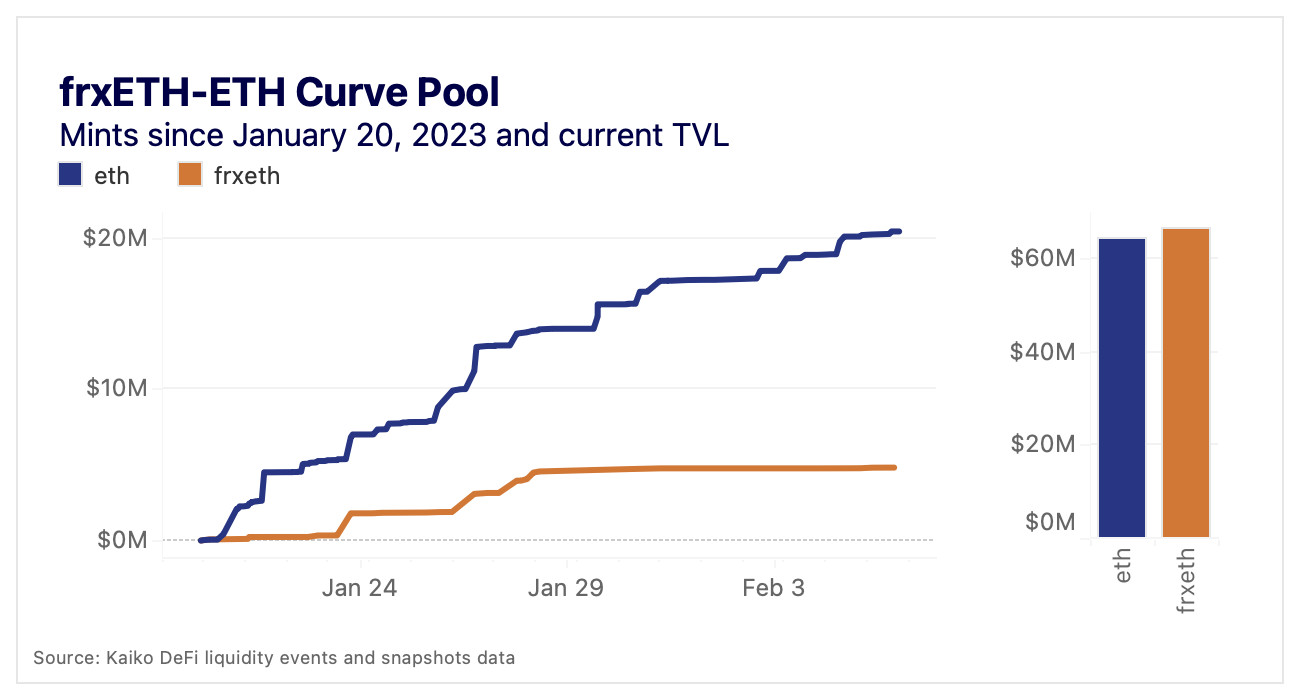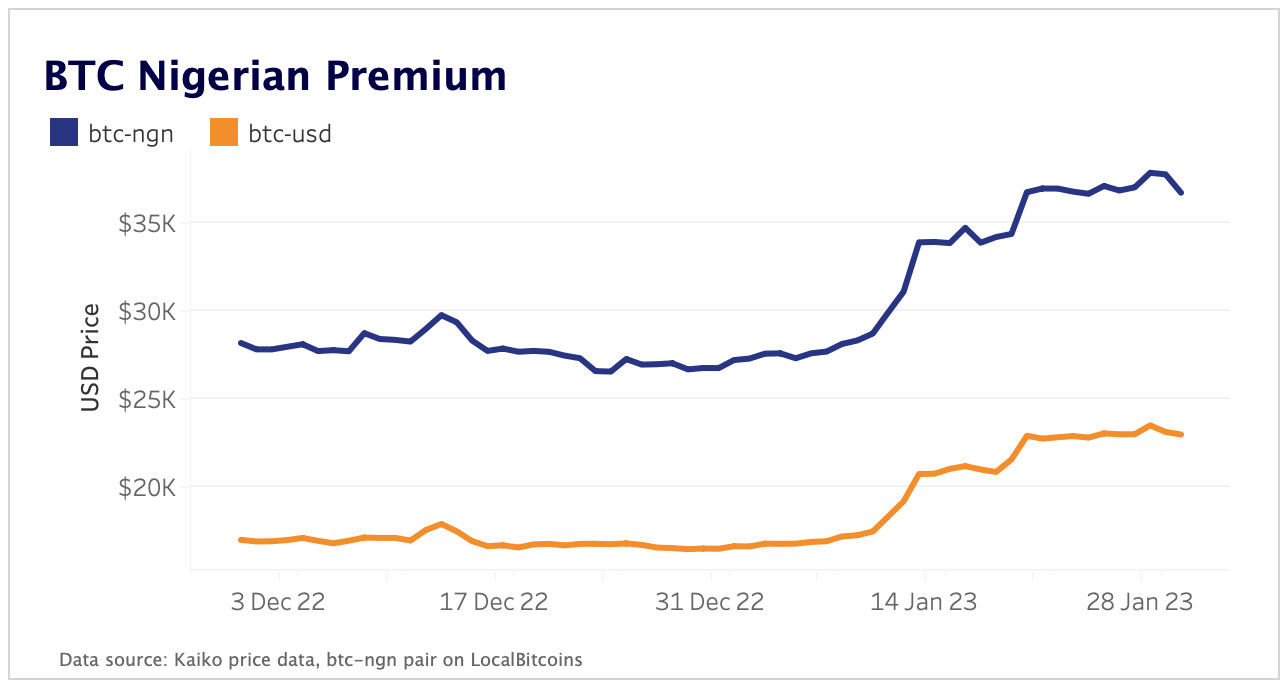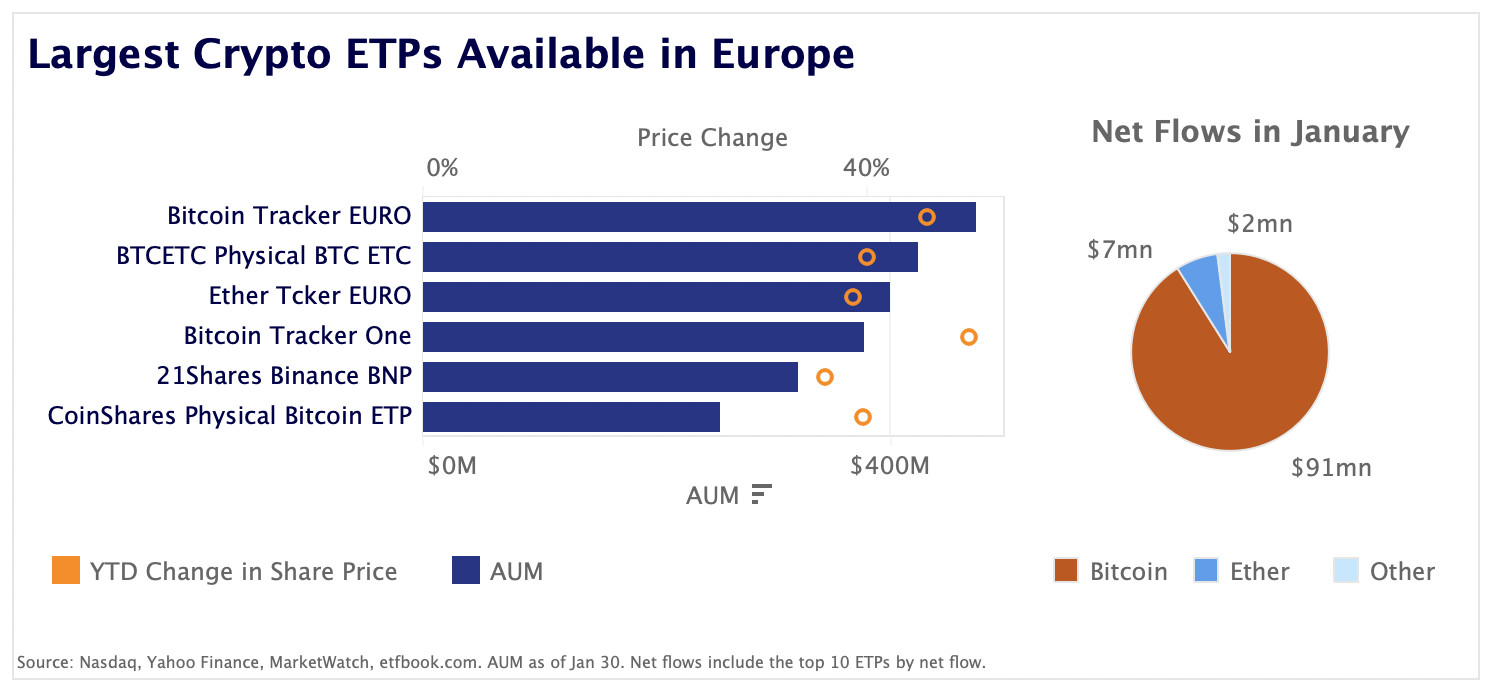A summarizing review of what has been happening at the crypto markets of the past week. A look at trending sectors, liquidity, volatility, spreads and more. The weekly report in cooperation with market data provider Kaiko.
The last 7 days at the cryptocurrency markets:
- Price Movements: DYDX has rallied 130% since the decentralized exchange announced they would postpone a planned unlock for the token.
- Market Liquidity: BUSD's market share has held steady since Binance admitted to mismanaging reserves.
- Derivatives: The open interest to market cap ratio suggests Optimism's OP token is highly leveraged.
- Macro Trends: European ETPs saw strong inflows in January.
BTC drops below $23k following strong U.S. jobs report

Bitcoin (BTC) slid below $23k to start the week, following five straight days closing in the red. The dip comes amid a similar pullback in traditional markets following a stronger-than-expected jobs report, which could signal to the Fed that rates can stay higher for longer. In other industry news, the bankrupt FTX estate is asking politicians to return donations, NFT sales reportedly surged by 38% in January, and Binance re-entered South Korean markets by acquiring a majority stake in Gopax Exchange.
Delaying unlock a welcome boost for DYDX token price
DYDX is the native token of the perpetual futures decentralized exchange of the same name. The token was due to release 15% of its total supply on Feb 3rd, a move that would have doubled the current circulating supply. According to TokenUnlocks, a massive 77% of DYDX supply remains locked.
However, dYdX announced they will be postponing this unlock in an effort to relieve sell pressure on the token, moving the unlock date until December. DYDX has rallied 130% since the news that this negative overhang on the short term price was being postponed to the end of the year, and is up 190% year to date. Many think that delaying the unlock allows dYdX a year to improve its tokenomics, namely the potential to share revenue with token holders. More importantly, the release of v4 on Cosmos may drown out the negative headlines associated with the unlock later in the year.
ETH breaks even since Merge as FTM soars
Ethereum (ETH) has again reached parity with its price on the day of the Merge after previously reaching parity on November 5, just ahead of the FTX collapse. The post-Merge landscape has been a mixed bag for some of its top competitors. Solana's SOL was one of the best performers in January but is still down nearly 30% since the Merge, largely because of its association with FTX and Alameda Research. Polkadot's DOT has performed slightly worse than ETH while BNB Chain's BNB has performed slightly better and is up nearly 10% in this timeframe.
Fantom’s FTM token has been the best performer and is up nearly 65%. FTM has been bolstered by the return of Andre Cronje, the DeFi builder and founder of Yearn.finance who exited Fantom last year.
Altcoin liquidity improves in January
Liquidity improved significantly for altcoins in January amid a wider market rally. This stands in strong contrast to liquidity for BTC, which has failed to recover since FTX's collapse. We measure liquidity using 2% market depth aggregated across all USD and stablecoin pairs for an asset on the top 18 exchanges according to Kaiko's exchange ranking. We denominate market depth using both USD and native units in order to to get a multi-faceted understanding of liquidity that accounts for the impact of the latest price rally.
The chart above compares the percentage change in market depth from January 2nd to January 31st, with depth denominated in USD. Most crypto assets have experienced double digit returns since the start of the year, but not all assets have undergone a similar surge in market depth. Market depth for Solana’s SOL and Avalanche’s AVAX doubled between January 2 and January 31. Tron's TRX was the worst performer, with liquidity dropping by 5% last month, despite a 12% rise in price.
When looking at the percentage change in market depth denominated in native units (charted below), which removes price effects, it is immediately clear that BTC's poor performance is due to a sharp drop in liquidity in native units which was barely counteracted by its price increase over the past weeks. In contrast, AVAX, Bitcoin Cash (BCH) and Ethereum Classic (ETC) native units market depth rose, which suggests a more tangible improvement in liquidity.
Overall, while ETH and most altcoins registered a drop in market depth in native units, the drop was much more contained than BTC's. It remains unclear why BTC liquidity has failed to recover in 2023.
BUSD retains market share amid mismanagement revelations
Last month, Binance admitted fault in not always keeping one-to-one reserves for its stablecoin BUSD. BUSD is issued and managed by two seperate entities: Binance and Paxos. The portion of BUSD that Binance issues was at one point under-collateralized by $1bn, which the exchange admitted to and has since corrected, although it is not clear for how long this lasted. Despite the revelations, BUSD has managed to retain its market share in the weeks since the story broke. Today, BUSD denominates around 35% of all trade volume on the exchange, up from 9% at the start of 2021.
Liquidity surges for frxETH Curve pool
Over $20mn worth of ETH has been added to the frxETH-ETH Curve pool since January 20, compared to just under $5mn worth of frxETH added, helping to bring the pool close to 50/50 balance. This pool is the main source of liquidity for Frax’s ETH liquid staking derivative, with over $120mn worth of ETH and frxETH currently in the pool, compared to $500k on Uniswap V3 and $3.5mn on Solidly; it is currently not available on any centralized exchanges. Liquidity is vitally important for LSDs ahead of the Shanghai upgrade, which will enable withdrawals of staked ETH.
The token has grown rapidly from its launch in October and there are currently over 85k frxETH tokens, for a market cap of nearly $150mn, almost half of which is deposited in this Curve pool. Interestingly, when users mint frxETH with ETH, the protocol is able to withhold some of the deposited ETH “to market make across DeFi”; it is currently using some of these funds to LP on Curve, a sign that Frax recognizes the importance of LSD liquidity.
BTC premium in Nigeria debunked
After the Nigerian government limited ATM withdrawals of Nigerian Naira on December 4, stories started circulated that Nigerians were paying a BTC premium upwards of 60%. While that figure is true using the official central bank exchange rate for USD, the facts are most Nigerians don’t actually use this rate to access USD.
The majority use the black market to access USD, in which the rate differs drastically. Using that rate, BTC-Nigerian Naira pairs trade at about fair value, debunking the BTC premium stories. The so-called premium has been in place before the ATM withdrawals - were this a premium issue, that premium would have risen post-December 4. We saw no change in trend for the BTC premium. All this isn’t to say that Nigerians aren’t turning to BTC to combat government restrictions, rather they are actually paying a premium to access USD, not BTC.
Bitcoin European ETPs see strong inflows in January
January's rebound in risk assets has extended to crypto-linked exchange traded products (ETP) in Europe, which saw net inflows in addition to double-digit YTD percent returns. Bitcoin ETPs registered the strongest net flows - over $90mn between December 31 and January 30 - followed by ETH, SOL and DOT (Other) ETPs.
The European ETP market has grown significantly over the past few years despite facing regulatory hurdles in some countries and increased competition from US-listed ETFs. Currently over 130 ETPs are available to European investors managing $4bn in assets. Three funds have over $400mn each, with XBT’s Bitcoin Tracker Euro topping the list with $474mn followed by BTCETC Physical BTC and Ether Ticker Euro.


